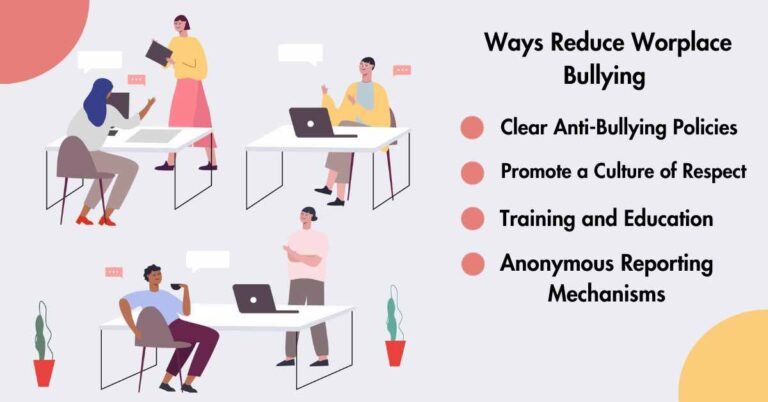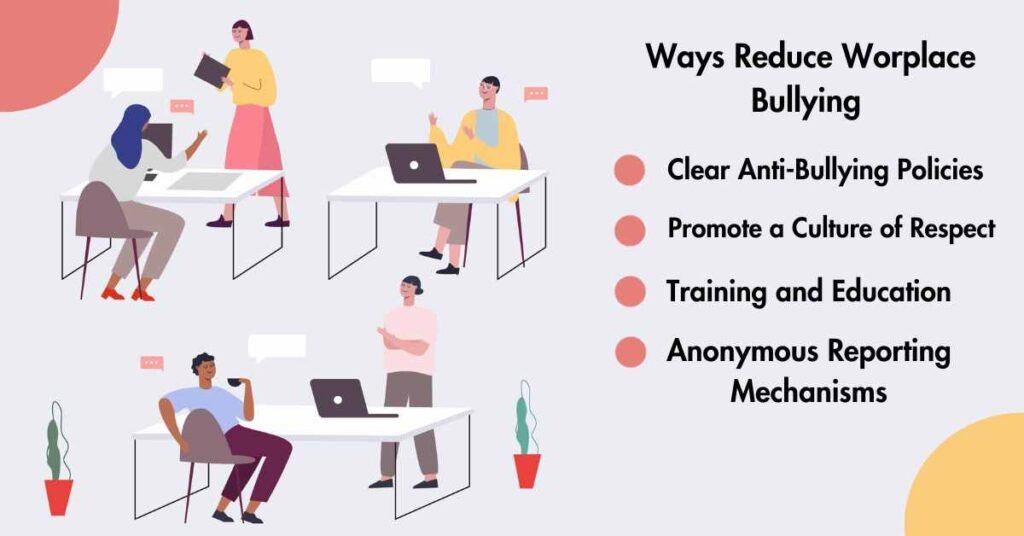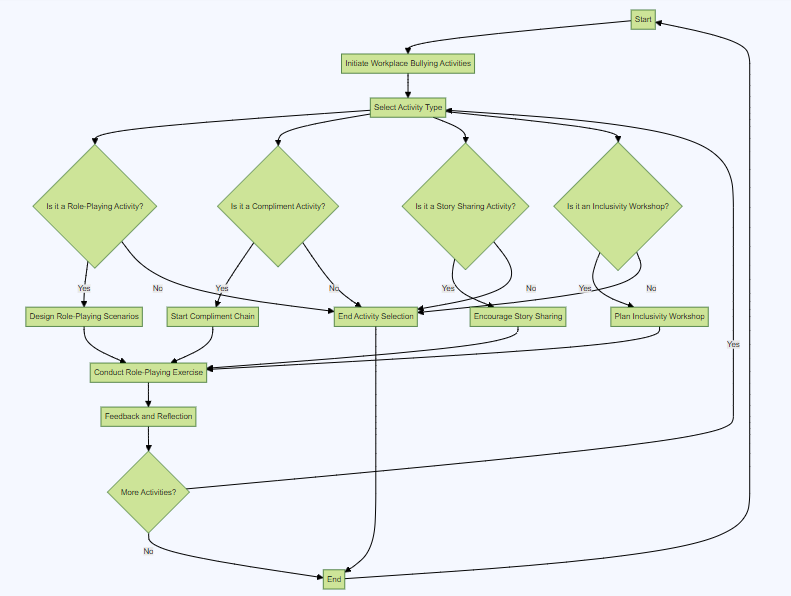
In today’s fast-paced corporate world, fostering a positive work environment is crucial to employee well-being and overall productivity. One of the most critical aspects of maintaining a healthy workplace is reducing workplace. In this article, we will explore various strategies and ways to reduce workplace bullying activities that can help organizations create a safe, respectful, and inclusive atmosphere.

Understanding Workplace Bullying:
Before diving into the strategies, let’s first gain a comprehensive understanding of workplace bullying. It’s essential to recognize that bullying in the workplace is not limited to physical intimidation; it can manifest in various forms, including verbal abuse, cyberbullying, exclusion, or unfair treatment.
What Is Workplace Bullying?
Workplace bullying encompasses any repeated, unreasonable behavior aimed at an individual or a group of employees. It can cause significant distress, harm, and a hostile work environment, affecting both the victim and the organization’s overall performance.
Effective Ways to Reduce Workplace Bullying:
1. Clear Anti-Bullying Policies:
The cornerstone of any effective anti-bullying strategy is a comprehensive and transparent anti-bullying policy. This policy should define what constitutes bullying behavior, how incidents will be investigated, and the consequences for perpetrators. Ensure that all employees are aware of this policy, and provide regular training to keep it top-of-mind.
2. Promote a Culture of Respect:
Create a culture where respect and inclusivity are not just buzzwords but integral to the company’s ethos. Encourage open communication, active listening, and empathy. Leaders should set the tone by modeling respectful behavior and addressing any bullying promptly.
3. Training and Education:
Educate employees about workplace bullying. Training sessions can help employees understand the different forms of bullying, recognize early warning signs, and provide guidance on how to respond when they witness or experience bullying. Empathy and emotional intelligence should be core components of such training.
4. Anonymous Reporting Mechanisms:
Establish a safe and anonymous reporting mechanism for employees to report bullying incidents. This helps create a safe space for victims and witnesses to come forward without fear of retaliation. Make sure that employees are aware of this reporting system.
5. Conflict Resolution Workshops:
Empower employees with conflict resolution skills. Conflict is a natural part of any workplace, but it’s essential to address it constructively. Conduct workshops that teach employees how to resolve differences and misunderstandings in a respectful manner, thus preventing conflicts from escalating into bullying.
6. Peer Support Groups:
Encourage the formation of peer support groups where employees can discuss their experiences, seek advice, and offer support to one another. These groups can create a sense of unity and provide an additional layer of protection against workplace bullying.
Workplace Bullying Activities:
Workplace bullying is a pervasive issue that can negatively affect both individuals and the overall atmosphere in a workplace. To address this problem, it’s essential to implement activities and interventions that foster respect and inclusivity. Here are some workplace bullying activities that can be effective in combating this issue:

- Walk in Their Shoes” Role-Playing
In this activity, employees are encouraged to participate in role-playing scenarios that mimic workplace bullying situations. They are asked to take on the roles of both the victim and the bully. This exercise can be a powerful tool for building empathy and understanding among employees. It allows participants to see and feel the emotional impact of bullying from different perspectives. By experiencing these situations, employees gain insights into the harm caused by bullying, fostering greater compassion and a commitment to preventing it. - Compliment Chain:
This workplace-wide initiative promotes positive interactions and boosts morale. The idea is for employees to offer genuine compliments to their colleagues. By focusing on positivity and appreciation, this activity can create a more nurturing and supportive work environment. Encouraging compliments can help counterbalance negative interactions and promote a culture of kindness and mutual respect. - Story Sharing:
Creating a safe space for employees to share personal stories related to bullying, whether as victims or bystanders, is crucial. This activity encourages open dialogue about bullying experiences and feelings. By sharing these stories, employees may find a sense of unity, realizing that they are not alone in their experiences. It can also help in breaking the silence surrounding workplace bullying and inspire collective action against it. - Inclusivity Workshops:
These workshops are focused on promoting diversity and inclusivity within the workplace. Through training and discussions, employees can develop a deeper understanding of the value of different perspectives, backgrounds, and experiences. Inclusivity workshops aim to create a culture where every individual is respected and appreciated for their unique contributions. This can lead to a more accepting and harmonious work environment, reducing the likelihood of bullying.
These activities and interventions are part of a proactive approach to tackling workplace bullying. They aim to foster a culture of empathy, open communication, and inclusivity, which are essential in preventing and addressing bullying issues. By engaging employees in these activities, organizations can work towards creating a workplace where everyone feels safe, respected, and valued.
Conclusion:
Reducing workplace bullying is not just a corporate responsibility; it’s a collective effort. By implementing clear anti-bullying policies, promoting a culture of respect, providing education and training, and engaging in workplace bullying activities, organizations can create a safer, more inclusive, and ultimately more productive work environment. Remember, it’s not just about addressing bullying when it happens, but also preventing it through proactive measures. A workplace where every employee feels valued and respected is a workplace where everyone can thrive.